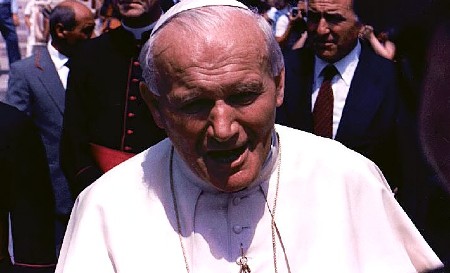We ask you, humbly: don't scroll away.
Hi readers, it seems you use Catholic Online a lot; that's great! It's a little awkward to ask, but we need your help. If you have already donated, we sincerely thank you. We're not salespeople, but we depend on donations averaging $14.76 and fewer than 1% of readers give. If you donate just $5.00, the price of your coffee, Catholic Online School could keep thriving. Thank you.Help Now >
Görz
FREE Catholic Classes
( Italian GORIZIA; Slovene GORICA).
Capital of the Austrian crown-land Görz and Gradiska, has a population (1900) of 25,432, almost exclusively Catholic, of which 68 per cent are Italians, 20 per cent Slovenes, and 11.6 per cent Germans. Since 1751 Görz has been the seat of an archbishop, metropolitan of the ecclesiastical province of Illyria.
History
The territory surrounding Görz belonged originally to the old Roman Prefecture of Illyricum, on the division of which into East and West Illyricum in 379 it remained a part of the latter, and shared its fortunes until Emperor Otto III divided it in 1001 between the Patriarch of Aquileia and the Count of Friuli. The latter immediately assumed the title of Duke of Görz after the castle of that name, for the town of Görz was not recognized as such until 1307. In 1031 Görz passed to the Eppenstein family of Carinthia, and thence in 1090 to the Counts of Lurn, who in 1202, by arrangement with the patriarch, Pilgrim II, secured the territory belonging to the Patriarchate of Aquileia. By marriage Count Meinhard III came also into possession of the Tyrol. After his death (1258) the family divided into the Görz line, represented by Count Albert II, and the Tyrolese-Carinthian line, represented by Count Meinhard IV. The latter line became extinct in 1335 with Henry of Carinthia, who had been for a time King of Bohemia (1307-10); the Görz line reached the zenith of its power under Henry II (d. 1323), among whose possessions were included Lusatia, Pusterthal, and Istria, and who held the office of vicegerent of the empire in the March of Treviso. Unsuccessful wars, divisions of inheritance, etc. led to the decline of the house, and at the death of the last count, Leonhard, in 1500 without issue, his territory fell to Emperor Maximilian I , and, except for a brief interval of French occupation (1809-15), has since remained a possession of the reigning house of Austria.
Ecclesiastically, this territory was from the beginning under the jurisdiction of the Patriarch of Aquileia. The fact that the patriarchs for the most part resided at Udine on Venetian land, while the patriarchal cathedral was situated at Aquileia on Görz territory, caused constant friction with Venice. Accordingly, in 1560 Emperor Ferdinand I agitated at Rome the question of establishing an independent bishopric at Görz, an attempt which was repeated many times during the following centuries, but fruitlessly until at last Benedict XIV, yielding to Austrian urgency and overriding the claim of the Republic of Venice to the Austrian part of the Patriarchate of Aquileia, established a separate vicariate Apostolic with residence at Görz (29 Nov., 1749). On 6 June, 1751, the patriarchate was definitively suppressed and replaced by two archbishoprics (18 April, 1752), those of Udine and Görz, the latter having as suffragans Trent, Triest, Como, and Pedena. The vicar Apostolic, Karl Michael, Count von Attems, was appointed first Archbishop of Görz, and in 1766 was raised to the dignity of a prince. After his death (1774) came Rudolf, Count of Edling, who was, however, deposed by Emperor Joseph II in 1784 for his opposition to the imperial patent of tolerance of 13 October of that year, and died in 1803 at Lodi. On 8 March, 1787, the emperor raised the Diocese of Laibach to the rank of an archdiocese, and on 20 August, 1788, in place of Görz established a new diocese in the adjacent province of Gradiska. Pius VI gave his sanction to the new arrangement on the condition that Gradiska should be regarded only as a co-episcopal seat (with Görz); by his Bull "Recti prudentisque consilii" of 12 September, 1797, however, he transferred the episcopal see and chapter back to Görz, and ordained that in future the bishop should bear both titles, Görz and Gradiska. By the Bull of 19 August, 1807, Pius VII reduced Laibach to the rank of a simple bishopric, and placed it with Görz and Triest under the immediate jurisdiction of the Holy See. Finally, on 27 August, 1830, Pius VIII raised Görz once more to the archiepiscopal rank, and assigned to it the Sees of Laibach, Triest-Capo d'Istria, Parenzo-Pola, and Veglia-Arbe as suffragans, Joseph Walland becoming archbishop. Since Archbishop Walland's death the archiepiscopal see has been occupied by: Franz Xaver Luschin (1835-54), distinguished for his apostolic zeal and unbounded charity; Andreas Gollmayr (1855-83), under whom the title of prince was restored to the archbishops ; Alois Zorn (1883-97), previously Bishop of Parenzo-Pola ; Jakob Missia (1898-1902), raised to the cardinalate, 19 June, 1899; Andreas Jordan (1902-05); and Franz Borgia Sedej, b. at Kirchheim, 10 October, 1854; ordained priest 26 August, 1877; appointed prince-archbishop by the emperor, 20 January, 1900; confirmed by the pope, 21 February of the same year, and consecrated on 25 March.
We ask you, humbly: don't scroll away.
Hi readers, it seems you use Catholic Online a lot; that's great! It's a little awkward to ask, but we need your help. If you have already donated, we sincerely thank you. We're not salespeople, but we depend on donations averaging $14.76 and fewer than 1% of readers give. If you donate just $5.00, the price of your coffee, Catholic Online School could keep thriving. Thank you.Help Now >
Statistics
The archdiocese embraces the northern part of the Austrian coast, that is the County of Görz and Gradiska, and numbers (1900) 17 deaneries, 86 parishes, 42 curacies, 65 vicarages, 13 benefices, 113 positions for assistant priests, 271 churches and chapels, 304 secular and 41 regular priests, 267,704 Catholics. The following religious congregations have foundations in the archdiocese : the Franciscans, who have the monastery of Castagnavizza, situated above the city of Görz, with an upper gymnasium for those desiring to enter the order; also houses on the Holy Mountain ( Heiliger Berg ) near Görz, and on the island of Barbana near Grado; the Capuchins at Görz and in the monastery of the Holy Cross near Haidenschaft; the Jesuits at Görz; the Brothers of Mercy of St. John of God , who have charge of the town hospital at Görz; the Ursulines at Görz; the Sisters of Mercy of St. Vincent de Paul, who have charge of the poor-house and the hospital for women at Görz, and of the orphan asylum at Contavalle, and have the domestic management of the preparatory seminaries of the prince-archbishopric at Görz; the School Sisters of Notre-Dame, who conduct a higher school for girls and St. Joseph's Asylum for girls at Görz; Sisters of xxyyyk.htm">Providence of St. Cajetan, with mother-house at Cormons and 5 branches; Sisters of Mercy of the Holy Cross, who are house-keepers in the central seminary of the prince-archbishopric at Görz. The cathedral chapter, established in 1751, and called the Capitulum Teresianum after Empress Maria Theresa , has 3 dignitaries ( provost, dean, and scholasticus), 4 capitulary and 3 honorary canons, and at the present time (1909) one honorary canon extra statum . The patron of the diocese is St. Hermagoras. The theological seminary Carolinum, founded in 1757 by Archbishop von Attems as a domus presbyterialis , has been since 1818 the chief seminary for the whole ecclesiastical province of Görz, with the exception of the Diocese of Laibach, which has a seminary of its own. Besides the cathedral at Görz, completed about 1400, which exhibits various styles of architecture, mention should be made of the cathedral at Aquileia (basilican style), consecrated in 1031 by the Patriarch Popo; likewise the former patriarchal, now the parish, church in the city of Grado on the lagoons, ancient itself and rich in art treasures of the early Middle Ages, including sculptures, mosaics, etc., of the sixth century.
 Hi readers, it seems you use Catholic Online a lot; that's great! It's a little awkward to ask, but we need your help. If you have already donated, we sincerely thank you. We're not salespeople, but we depend on donations averaging $14.76 and fewer than 1% of readers give. If you donate just $5.00, the price of your coffee, Catholic Online School could keep thriving. Thank you. Help Now >
Hi readers, it seems you use Catholic Online a lot; that's great! It's a little awkward to ask, but we need your help. If you have already donated, we sincerely thank you. We're not salespeople, but we depend on donations averaging $14.76 and fewer than 1% of readers give. If you donate just $5.00, the price of your coffee, Catholic Online School could keep thriving. Thank you. Help Now >
We ask you, humbly: don't scroll away.
Hi readers, it seems you use Catholic Online a lot; that's great! It's a little awkward to ask, but we need your help. If you have already donated, we sincerely thank you. We're not salespeople, but we depend on donations averaging $14.76 and fewer than 1% of readers give. If you donate just $5.00, the price of your coffee, Catholic Online School could keep thriving. Thank you.Help Now >








 Daily Readings for Friday, April 26, 2024
Daily Readings for Friday, April 26, 2024 St. Cletus: Saint of the Day for Friday, April 26, 2024
St. Cletus: Saint of the Day for Friday, April 26, 2024 Prayer before the Closing of the Day: Prayer of the Day for Friday, April 26, 2024
Prayer before the Closing of the Day: Prayer of the Day for Friday, April 26, 2024


